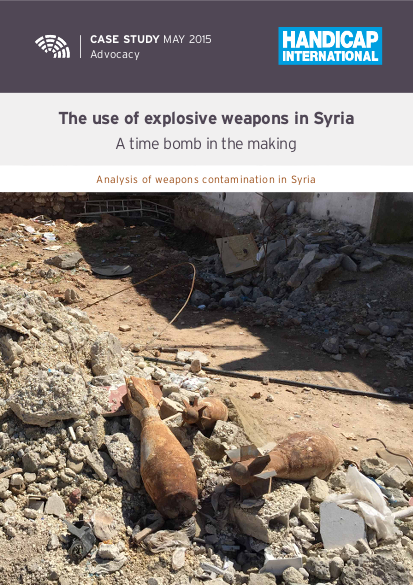Analysis of weapons contamination in Syria

In order to document and analyse weapons contamination in Syria for programming purposes, Handicap International began to gather data on the types and use of conventional weapons: small arms and light weapons, explosive weapons such as rockets, mortars, artillery shells, cluster munitions, landmines as well as improvised explosive devices (IEDs). By compiling secondary data, including reports of clashes, datasets from UN agencies and International Non Governmental Organisations, open source media and social media reports, the research team created a consolidated database of incidents. This available data was then used to map the frequency and severity of incidents in order to evaluate the weapons contamination that is currently affecting and will continue to affect the civilian populations in Syria if no action is immediately taken to develop an appropriate humanitarian response.
The data included in this report has to be considered as trends and estimates. Due to the nature of the ongoing conflict, systematic data collection in Syria remains impossible so the information provided here is not to be seen as a comprehensive compilation of all incidents. The information was collected between December 2012 and March 2015, by several organisations (including UNMAS - United Nations Mine Action Service - and Human Rights Watch) that agreed to share data with Handicap International. The estimation of the contamination’s toll on the population was done according to a severity scoring approach, which compared population density and the number of incidents per sub-district (see detailed methodology in annex).